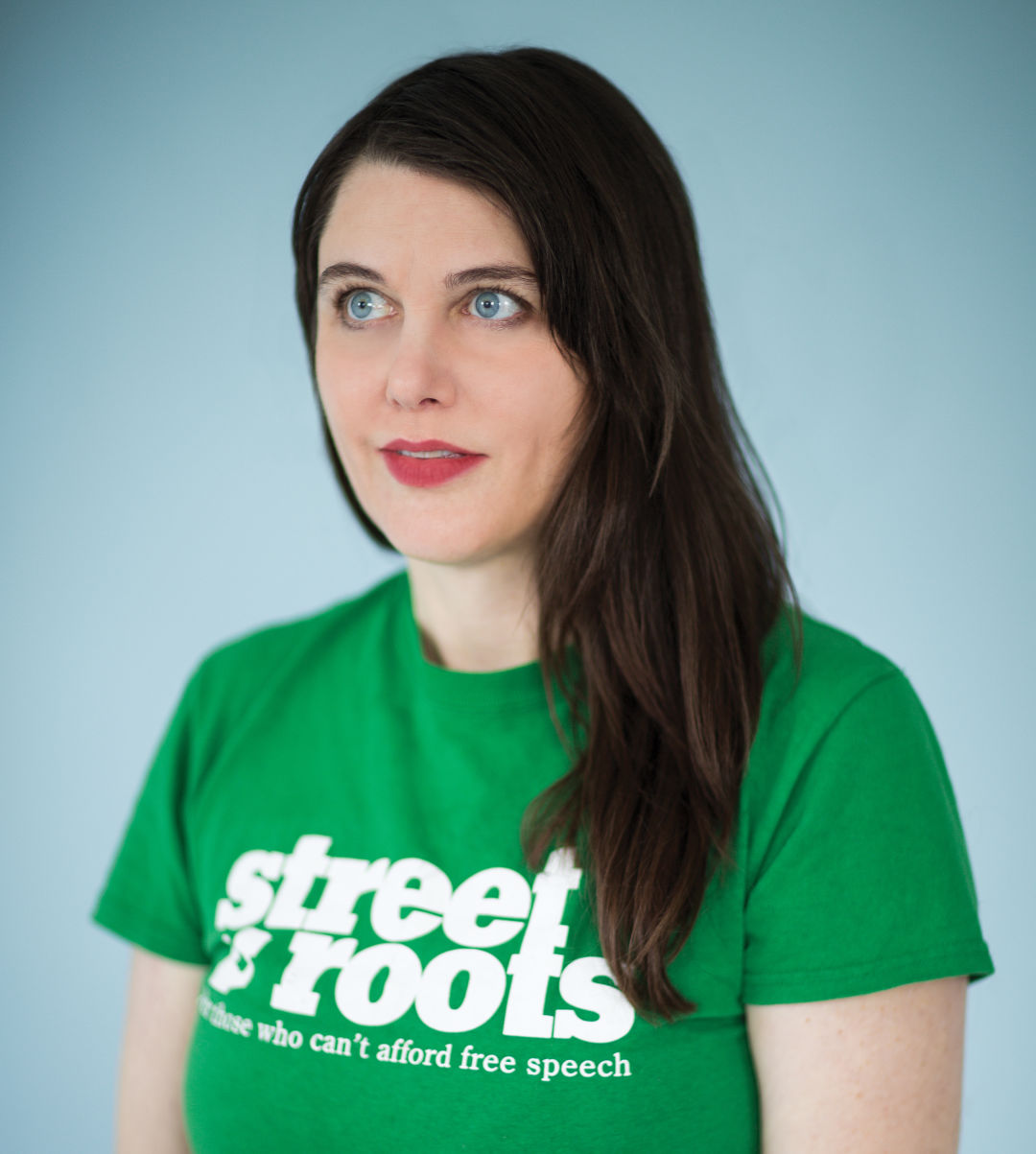Meet the New Executive Director of Street Roots

Street Roots executive director Kaia Sand
Image: Christopher Dibble
Before Kaia Sand took over as executive director of Street Roots last December, one of its vendors challenged her to spend a day selling the paper. The 46-year-old poet, activist, and former Portland State professor accepted, taking up position outside her local New Seasons in Sellwood. She’d brought a stack of the newspapers vendors can buy for 25 cents and sell for a dollar, keeping the difference. After stalling (“I need a cup of coffee!”), she still felt shy.
“The vendors really teach each other how to engage people, and how to talk about the content, but I just stood there,” Sand says. “And people started stopping, saying, ‘Oh, I haven’t picked up my Street Roots yet!’ It was really powerful to me, because I realized every paper that I sold was because of the work of vendors who had sold there first.”
Street Roots is a newspaper, yes, but it encompasses many other things: advocacy, connection, art, and informal social service. Founded in 1999 with just five vendors, it now supports more than 170, all experiencing homelessness or poverty. In 2015, the paper went from biweekly to weekly—possibly the only print publication in America to expand in the digital age—and now has a circulation of around 10,000.
During his 15 years at Street Roots, Sand’s predecessor, Israel Bayer, who stepped down late last year, established himself as a tireless, connected front person for both the organization and the Portland houseless (often the preferred term) community. It’s a role that Sand seems born to fill. A longtime organizer and volunteer with Portland organizations, Sand once wrote for Burnside Cadillac, Portland’s previous street newspaper; her parents were both journalists. In the 1940s, Sand’s maternal grandmother lived on the edge of houselessness, including at a bedbug-infested hotel at SW Third and Pine (where the Bijou now is).
In this age of digital news, Street Roots’ paper-and-ink model seems an unlikely success story. But Sand thinks that is more than incidental—the physical paper creates a tangible connection between vendor and reader, between the houseless and the housed community. Street Roots, one vendor told her, is about telling a shared story.
“The paper makes a claim on the democracy of public space,” she says. “People assert their right to be there, to transport the news.”
That sort of bigger picture helped Sand get the job. She brings an artist’s unruly perspective, along with an ability to meet the vendors where they are. “It is very much a visionary position, but it’s also detail-oriented,” says Cole Merkel, the paper’s vendor program director. “The vendors wanted someone willing to get into the weeds, somebody who could have compassion and work right alongside with them because the vendors are the reason we exist.”




